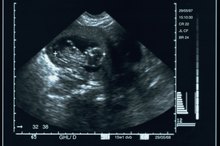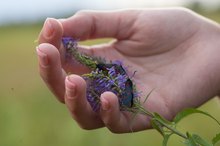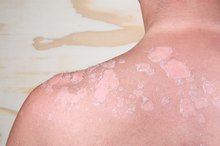What does fact checked mean?
At Healthfully, we strive to deliver objective content that is accurate and up-to-date. Our team periodically reviews articles in order to ensure content quality. The sources cited below consist of evidence from peer-reviewed journals, prominent medical organizations, academic associations, and government data.
- International Journal of Epidemiology: A Fingerprint Marker from Early Gestation Associated with Diabetes in Middle Age -- The Dutch Hunger Winter Families Study
- International Journal of Epidemiology: A Fingerprint Marker from Early Gestation Associated with Diabetes in Middle Age -- The Dutch Hunger Winter Families Study
The information contained on this site is for informational purposes only, and should not be used as a substitute for the advice of a professional health care provider. Please check with the appropriate physician regarding health questions and concerns. Although we strive to deliver accurate and up-to-date information, no guarantee to that effect is made.
The Development of Fingerprints in Babies
Fingerprints are commonly used to identify an individual. Research also suggests that fingerprints may provide information about future diseases an individual may be at risk for developing. Each fingerprint develops in phases as a fetus grows, forming a unique pattern of ridges, arches, whorls and loops.
Finger Pad Development
The development of pads on the fingers and palms of fetuses marks the threshold for fingerprint development. This occurs during the second and third months of pregnancy, when the fingers are developing and the fetus is between 1 inch and 3 1/2 inches in size. The overall growth rate of a fetus and placement of the pads on developing fingers helps to determine where the future identifying skin indentations will be placed.
Skin Layer Growth
Breast Stages in Puberty
Learn More
The third and fourth months of gestation find the skin of a fetus transforming from thin transparency to a waxy coating. It is during this time the middle layer of skin, called the basal layer, begins to outgrow the inner dermis and epidermis skin layers. The buckling and folding of this skin layer is partially responsible for the unique stresses in fingertip pads that become visible as development ensues.
- The third and fourth months of gestation find the skin of a fetus transforming from thin transparency to a waxy coating.
- The buckling and folding of this skin layer is partially responsible for the unique stresses in fingertip pads that become visible as development ensues.
Creation of Ridges
The first identifying marks that occur on a fetus’s skin are called ridges. Ridges are the faint lines on the fingertips that create the foundation of a fingerprint. A fetus touches surrounding structures -- her exact position in the womb and the density of the womb’s amniotic fluid determine how every individual ridge will form. The level of activity of a fetus and the general chaos of the conditions of the womb prevent fingerprints from developing the same way in fetuses.
- The first identifying marks that occur on a fetus’s skin are called ridges.
- The level of activity of a fetus and the general chaos of the conditions of the womb prevent fingerprints from developing the same way in fetuses.
Ridge Patterns
Factors That Affect Nail Growth
Learn More
By the time a fetus is six months old and approximately 12 inches in size, his fingerprints and footprints are fully developed. The ridges on a fetus’s fingertips have formed three main patterns by this time, categorized as arches, loops and whorls, with numerous patterns in between. These patterns are found on the fingertips, palms and soles and are used to grasp things.
Fingerprint Characteristics
Ridge patterns share two common characteristics found in every fingerprint: ridge end and bifurcation 34. The sequences of ridge end and bifurcation characteristics are different in every fingerprint. A ridge end consists of a ridge that ends abruptly; bifurcation is created by a single ridge that forks in two and continues on as separate ridges. These ridge characteristics may be a genetic roadmap for the predisposition of certain diseases. So far, researchers have found that people with diabetes have a much higher ridge count than those with normal glucose tolerance.
- Ridge patterns share two common characteristics found in every fingerprint: ridge end and bifurcation 3.
- These ridge characteristics may be a genetic roadmap for the predisposition of certain diseases.
Related Articles
References
- International Journal of Epidemiology: A Fingerprint Marker from Early Gestation Associated with Diabetes in Middle Age -- The Dutch Hunger Winter Families Study
- Journal of Theoretical Biology: Fingerprint Formation
- Journal of Pediatric Gastroenterology and Nutrition: Dermatoglyphic (Fingerprint) Patterns in Celiac Disease
- Journal of Pediatric Gastroenterology and Nutrition: Dermatoglyphic (Fingerprint) Patterns in Celiac Disease
Writer Bio
Based near America's "Gateway to the West," Li St. Michael has been writing professionally since 2005. Her culturally minded articles have appeared on various websites. St. Michael holds a Bachelor of Science in writing from Drury University and is set to receive a Masters degree in international relations in 2011.









